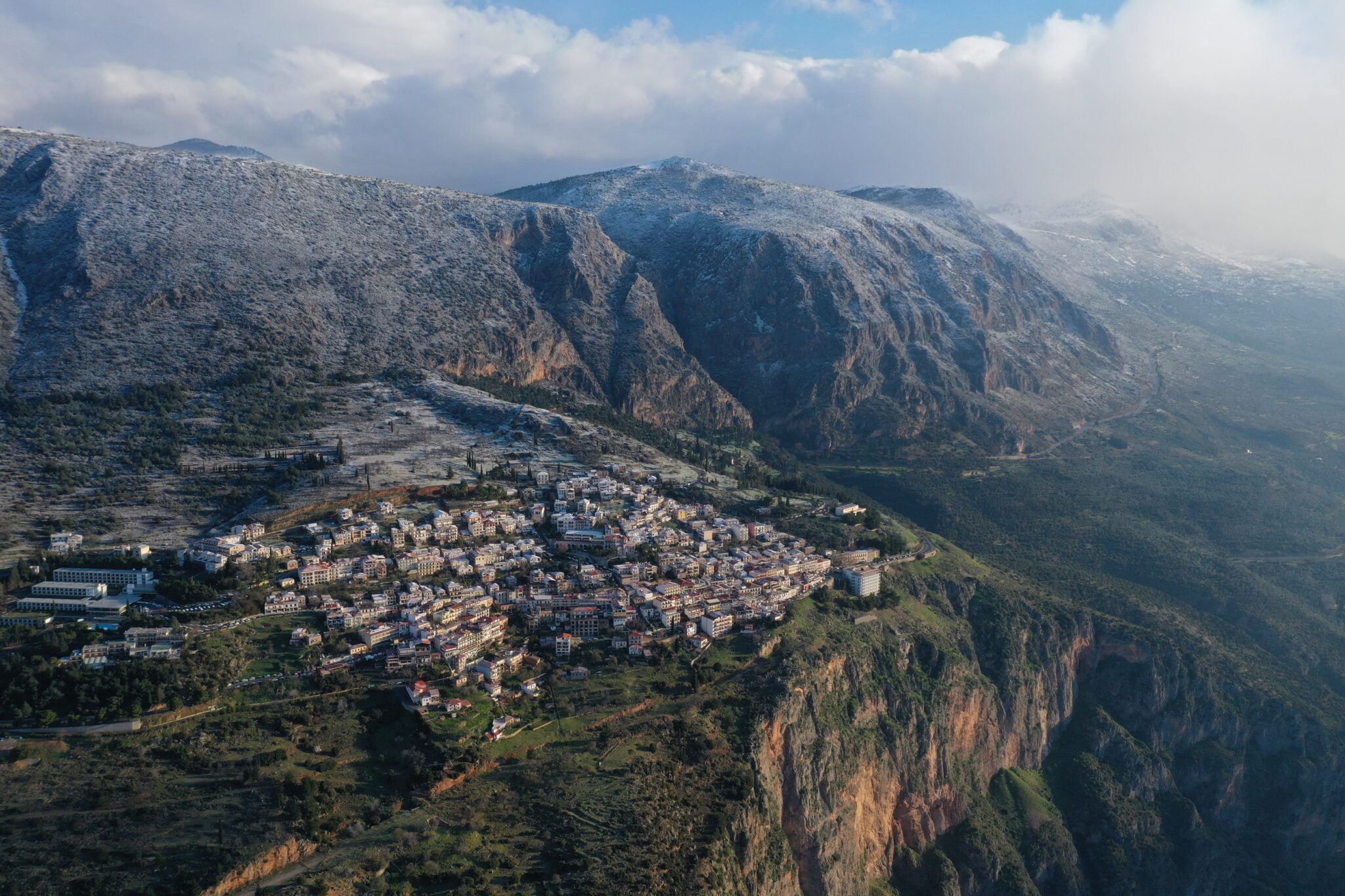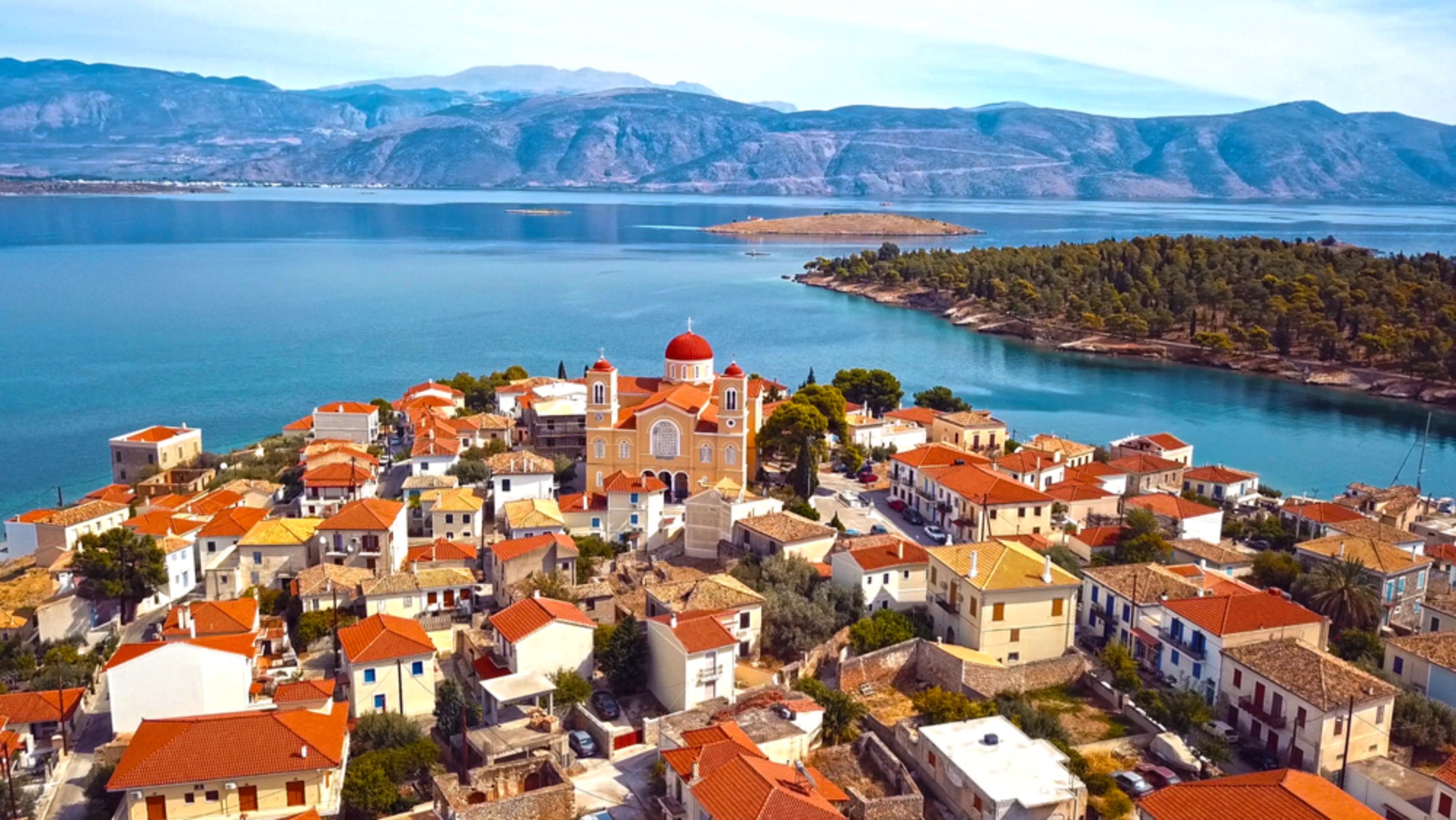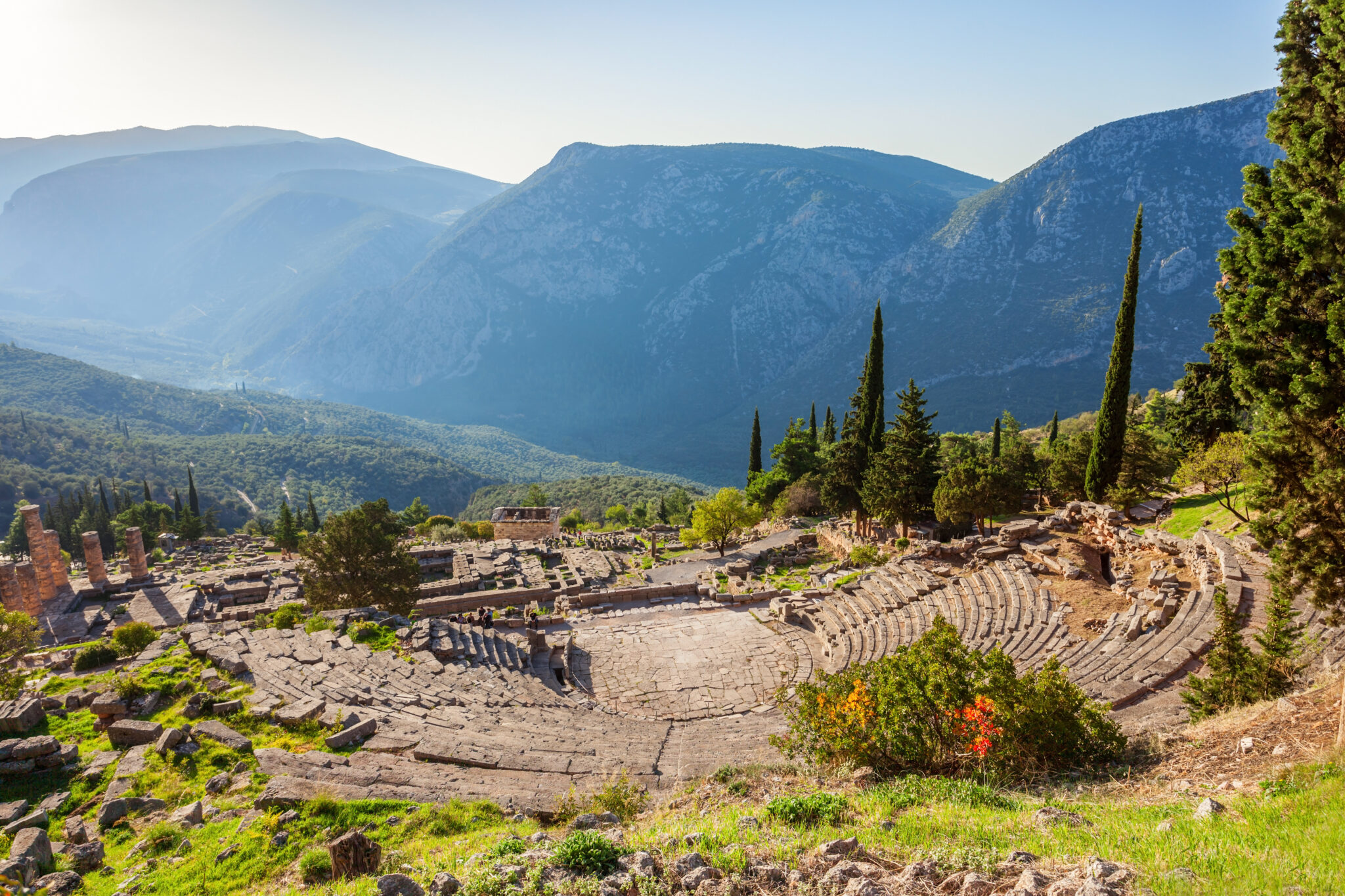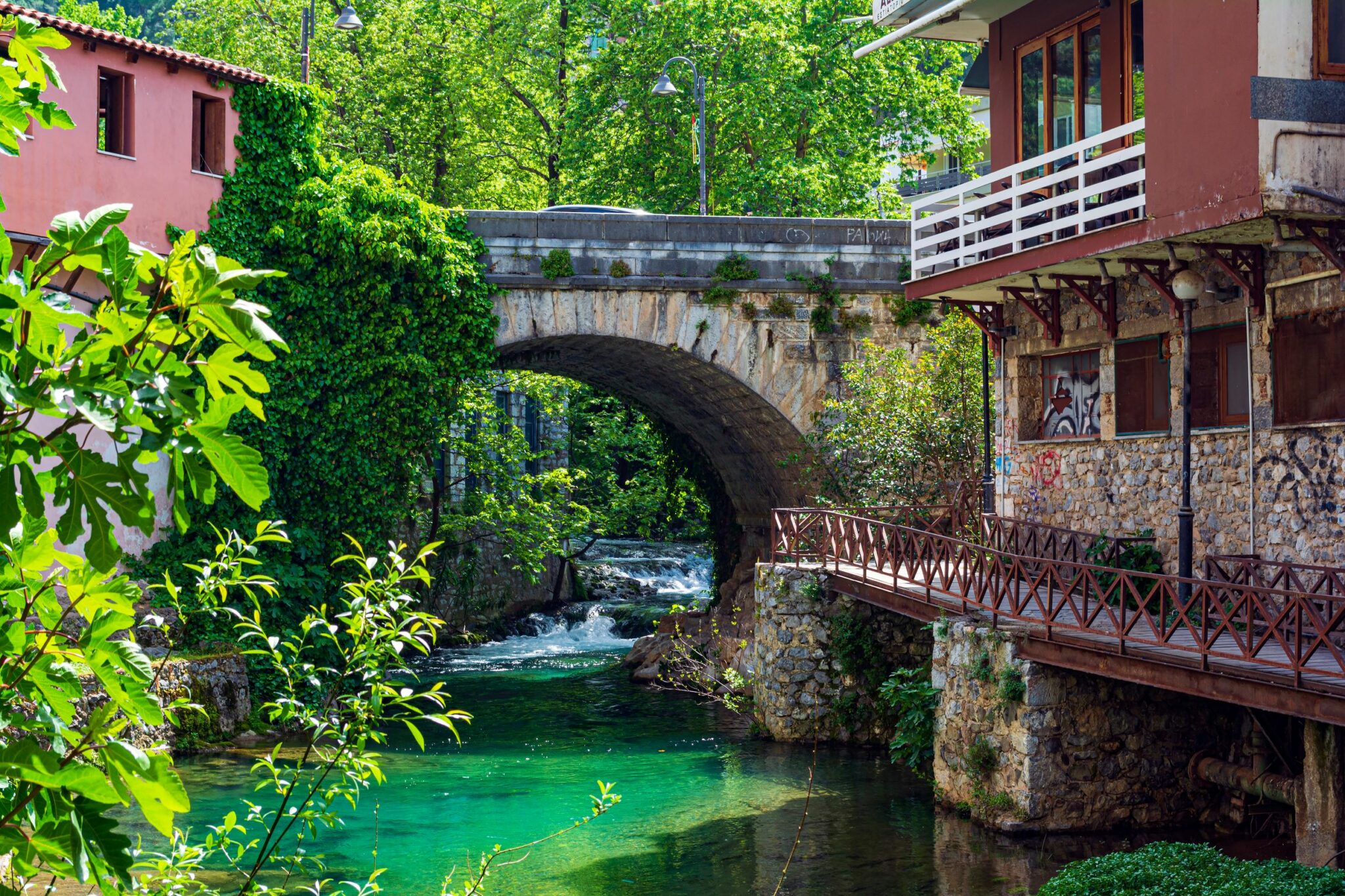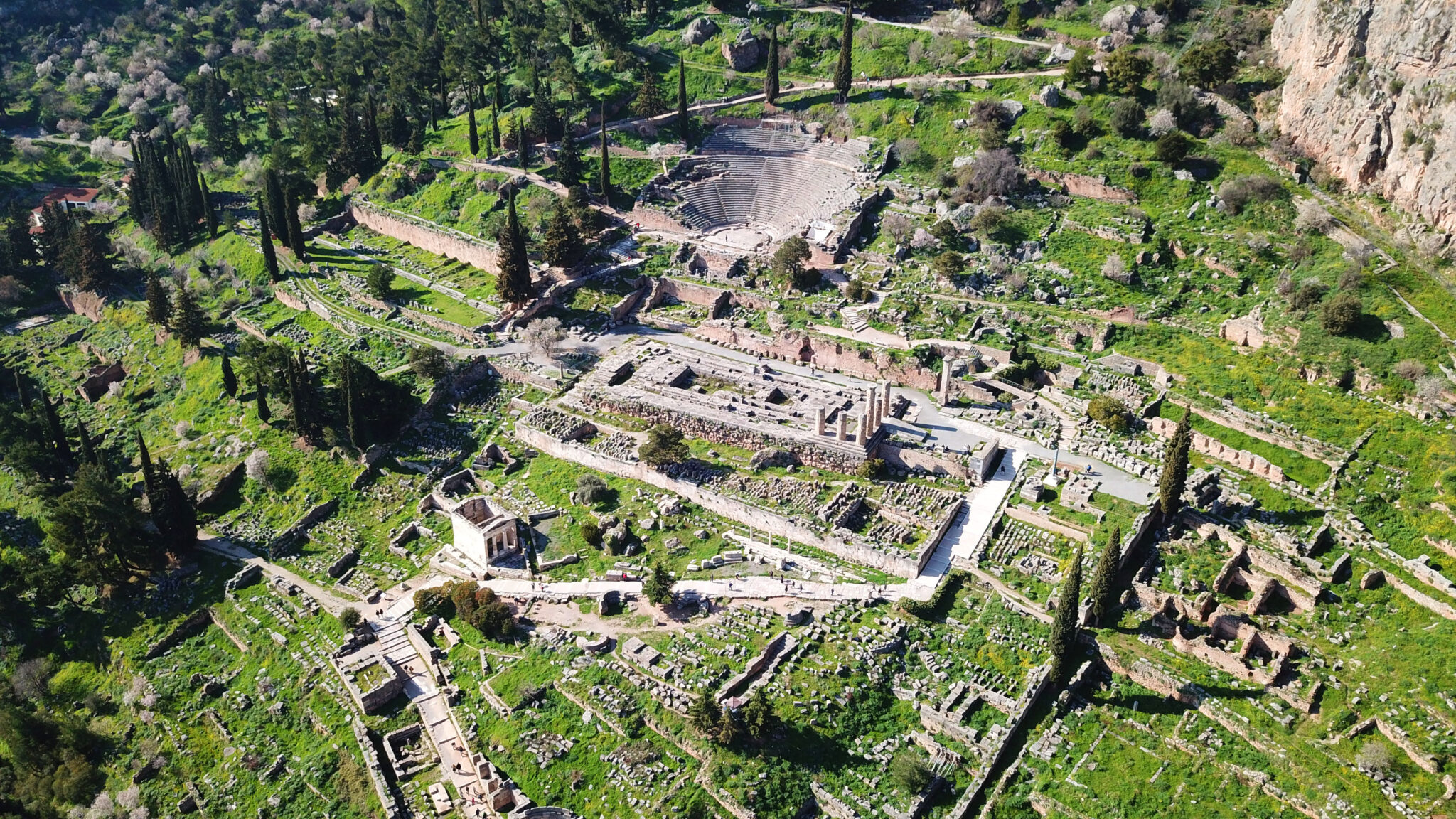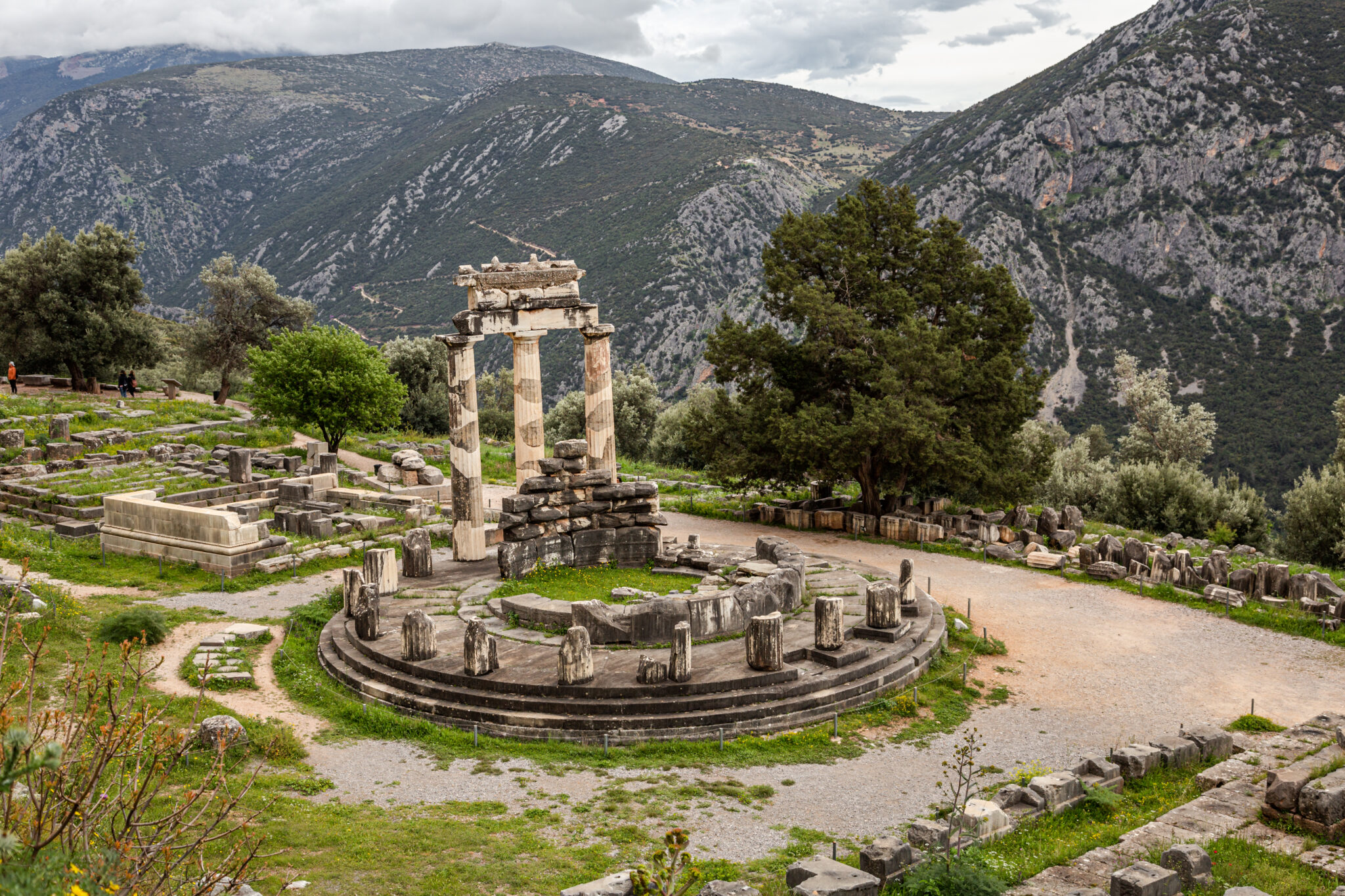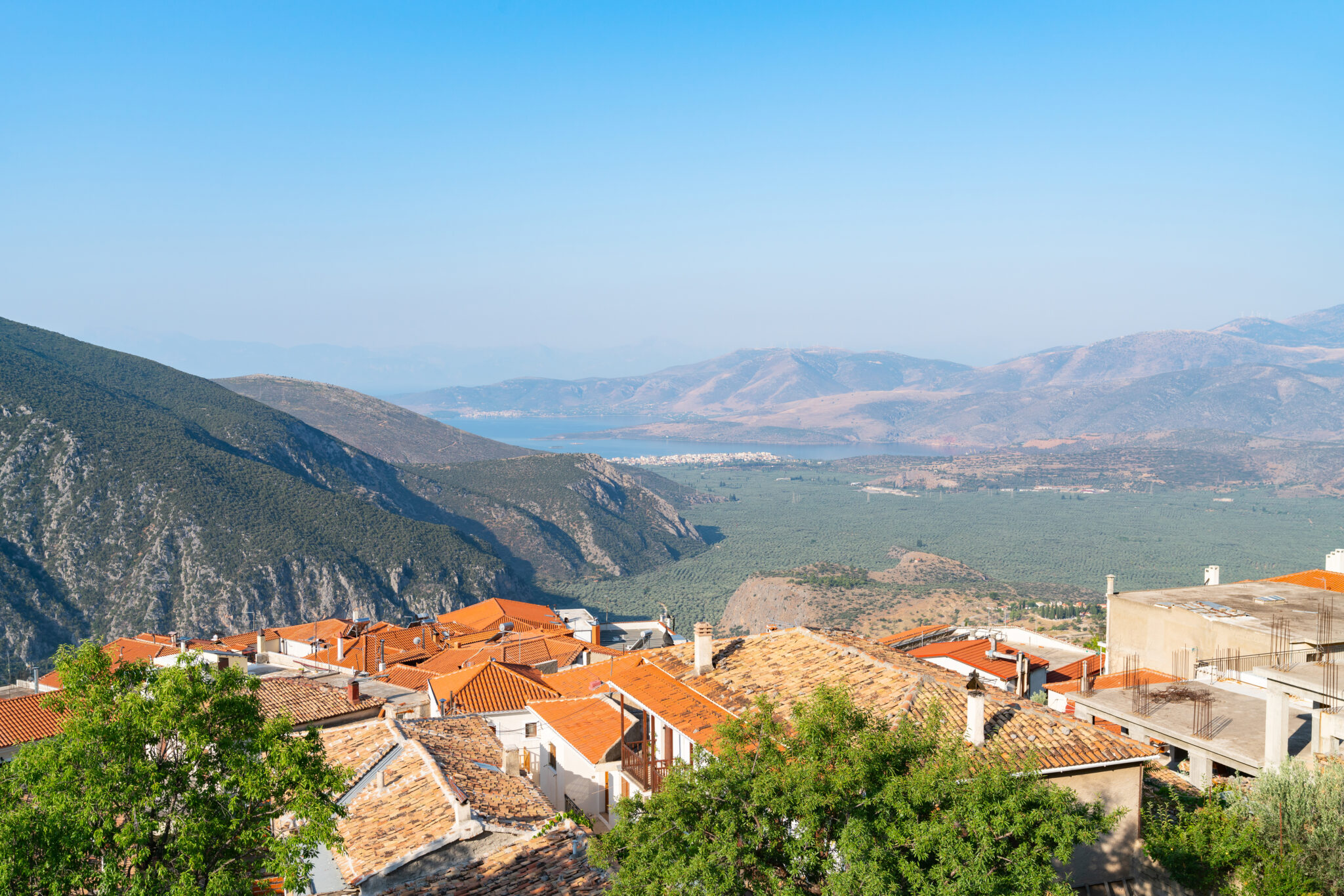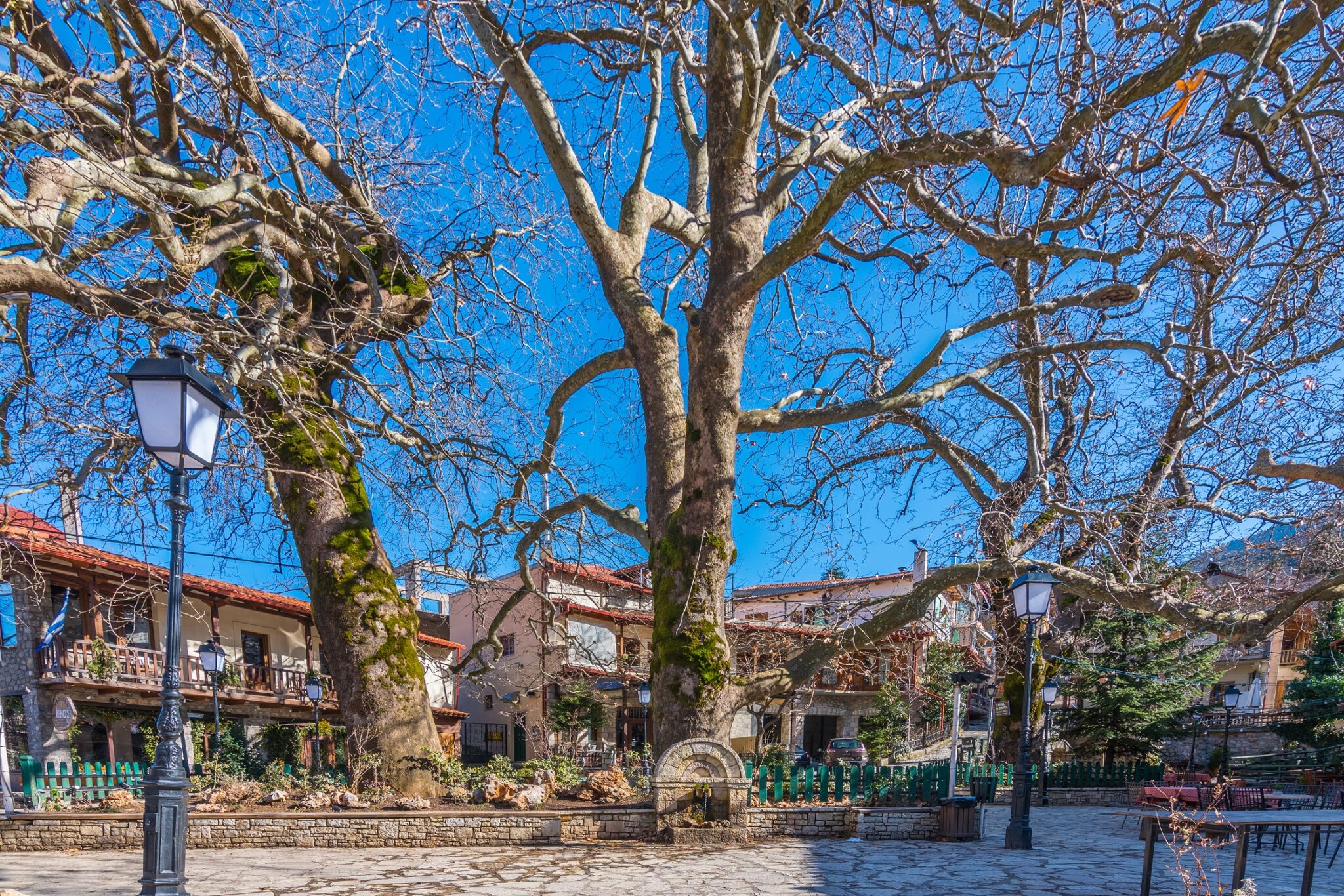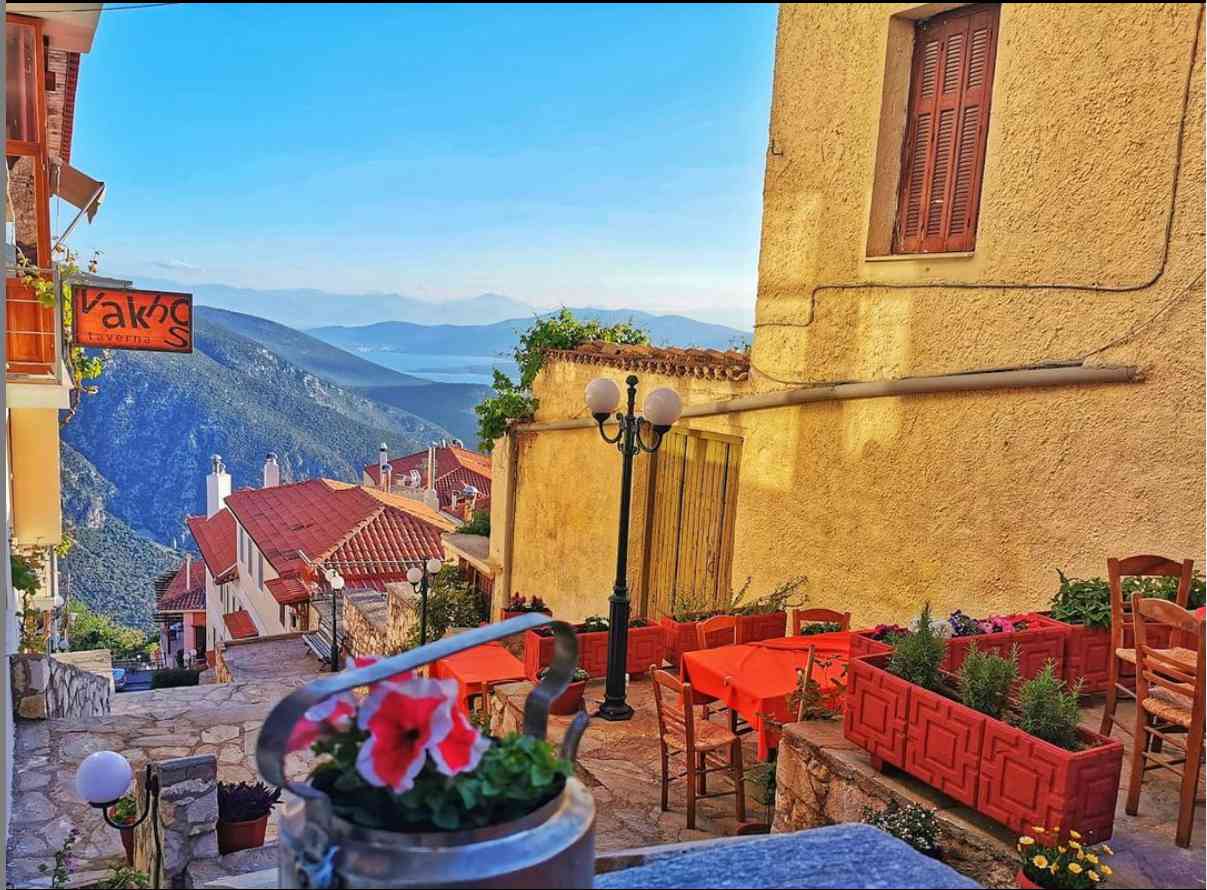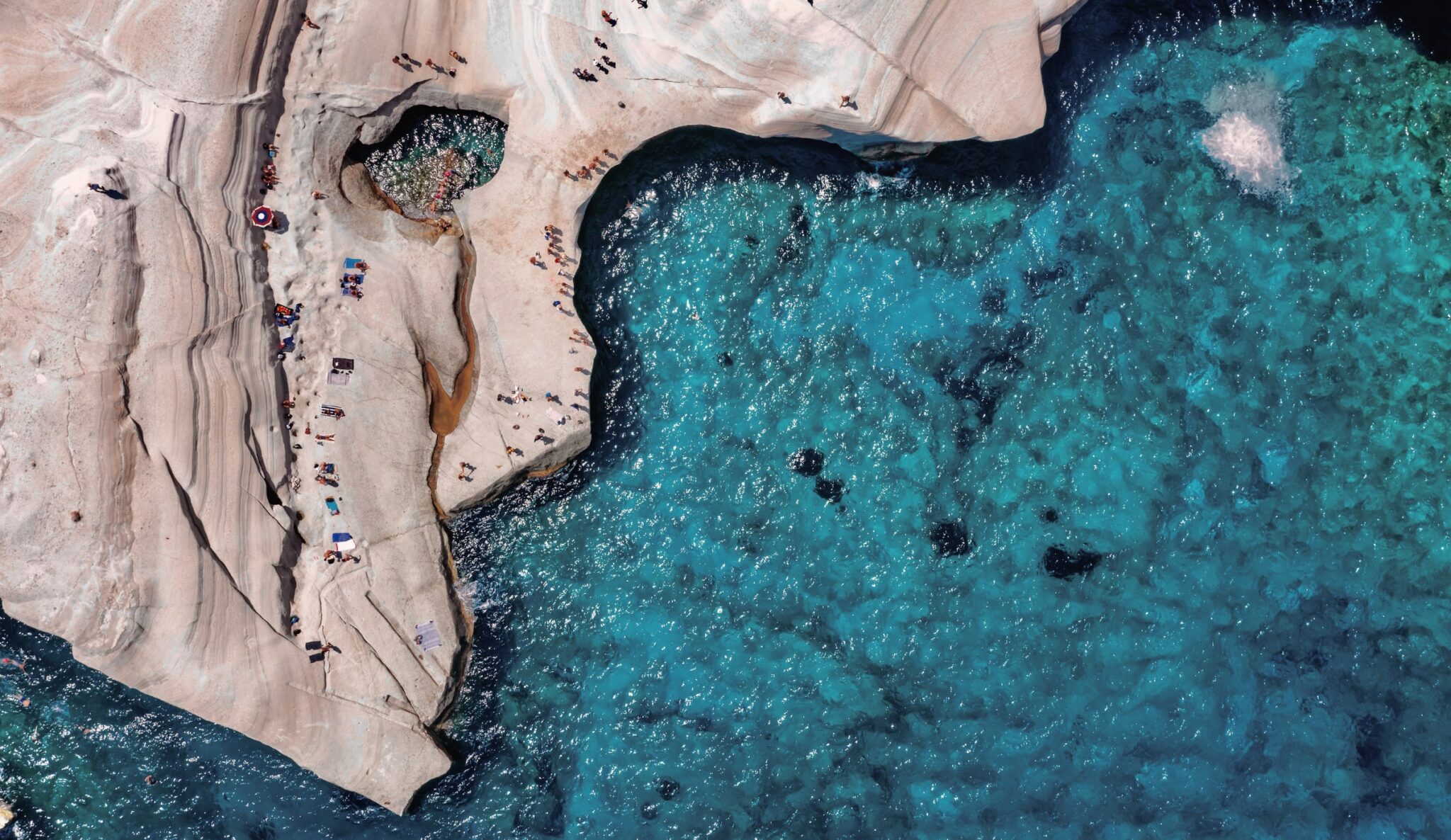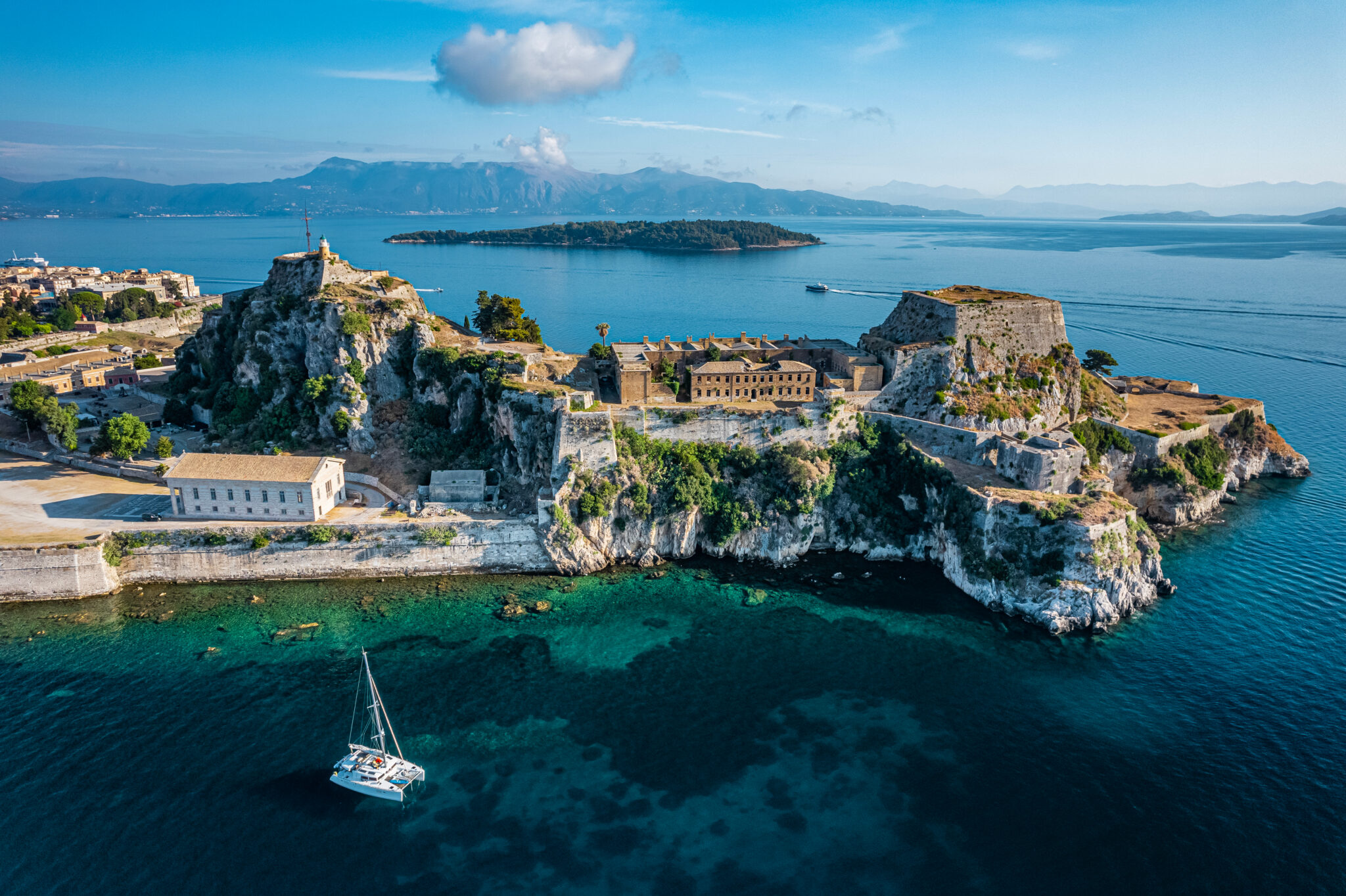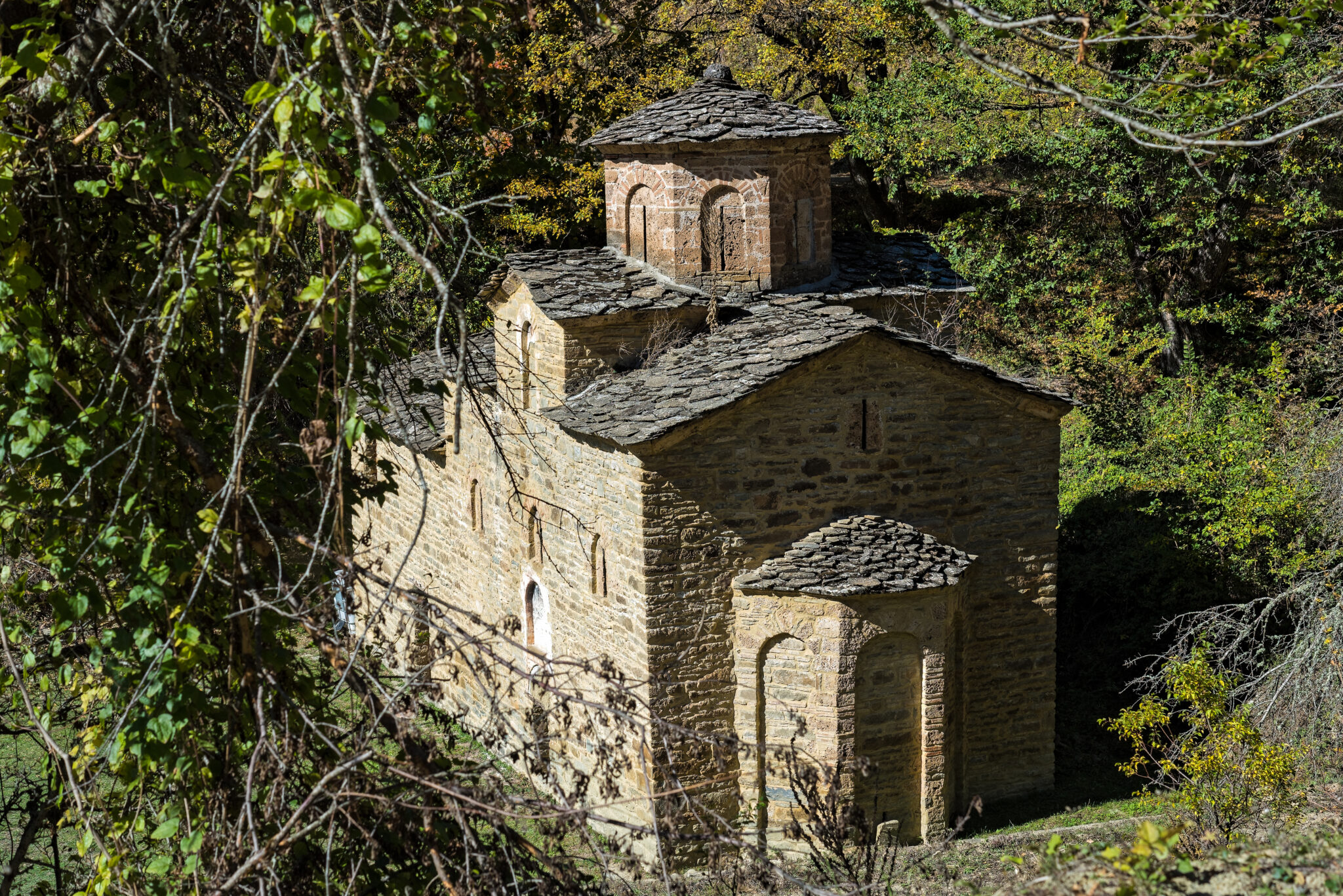There are two main routes to Delphi. You can take the national road towards Livadia and get off the highway at the Kastro exit, or, for a route with more interesting views, you can go through Thiva, Aliartos and Agia Paraskevi. If you’re starting in west Attica, you can also go via Magoula and Erithres. Whichever route you chose, the journey takes around 2.5 hours and coming in a reliable hire car is advisable.
If taking the Athens-Lamia national road, your first stop should be to discover the riches of the archaeological sites at Orchomenos. The park is home to a well-preserved ancient theatre dating back to the 4th century, and the tholos (a Mycenaean chambered tomb) of Minyas, the mythical king of Orchomenos. The Myceneaen period burial ground dates back to 1250 BC. The domed tomb and preserved infrastructure provide the finest example. In the wider perimeter of the park are the ruins of temples where Dionysus and Asclepius are said to have been worshipped, as well as parts of the 4th century BC city walls and parts of a tower. Be sure also to visit the exquisite Byzantine church of Skripou, built in the 9th century, just across the road.
Visiting the Three Charites springs provides the ideal opportunity for a pleasant walk. Start across from Panagia Skripou church and follow the route alongside the Mavropotamos river. You’ll see water running off the rocks and at some spots the natural springs. If you have time, you can also stop at Krya, Livadia. It’s an ideal place to cool off in a somewhat fairy tale setting – by the river, the mini waterfalls, the streams, the watermills, the tall plane trees, the stone bridges, the Catalonian tower and the oracle of Trophonius. And then, it’s time to head to your final destination.
The road will take you past the town of Arachova, but there’s no time to stop if you want to visit the archaeological site at Delphi. Arachova is a destination for another trip. You are now just 12km, around a 15 minute drive, from the car park at Delphi. According to mythology, Zeus released two eagles, one to the East and one to the West, to discover the centre of the earth, and the two eagles met in Delphi. To the Ancient Greeks, Delphi was the most important of places. Mythology tells us there was a temple dedicated to Mother Earth, guarded by the serpent Python. But Apollo killed Python and built his own temple at Delphi. Or rather, the temple was built by the Cretans who arrived in Delphi accompanied by Apollo in dolphin form. Tributes found in the excavations here show Delphi’s fame spread to countries like Syria and Armenia.
The High Priestess was called Pythia and was obliged to deliver the oracles to the mortals. After purifying herself in the Castalian Spring that lies next to the archaeological site, she would enter the temple, chew bay leaves and in a trance state she would utter incomprehensible words that a group of priests and priestesses would turn into a meaningful oracle. It’s believed that the oracle and its prophecies played a big part in the Argonautic campaign, the Trojan war, and the establishment of Greek colonies. The temple thrived between the 6th and 4th centuries BC, while it stopped operating in 394 AD by order of the Byzantine emperor Theodosius I.
Tickets cost €12 (€6 concessions). This includes entrance to the archaeological site and the museum. It’s a good idea to start at the tholos of Athena Pronaia and the Gymnasium first, and then go up to the main archaeological site where the temple of Apollo, the ancient theatre, the stadium, the remains of various city-states and the museum are located. Sensible footwear is a must as the pathways are uneven and the site is spread out on a steep hillside. But that’s good news. For, as you go up, the views of the surrounding mountains and the olive groves below are stunning. It won’t be hard to understand why the ancient Greeks chose this place for their* temple. Just before you reach the stadium, the highest up location, take time to turn back and admire all the monuments below. It’s a truly breathtaking sight.
After stopping at the café to catch your breath, visit the museum, open daily from eight til eight. The significant ancient art on display here spans from the 2nd millennium BC, before the establishment of the temple, until late antiquity. Some of the most impressive exhibits include the bronze statue of the Charioteer of Delphi, the 2.32 metre tall marble Sphinx of Naxos, the Siphnian and Athenian treasures, the archaic and classical facades of the Temple of Apollo, and the tholos of Athena Pronaia.
After you’re done with the archaeological site and museum, it’s time to visit the village. Walk around among the beautiful neoclassical buildings and enjoy the magnificent views that reach as far as Itea and Galaxidi. And then it is surely time to sit at one of the taverns or cafés in the village. It’s also worth visiting the Museum of Delphic Festivals that’s based in the old stone house of the poet Angelos Sikelianos. In 1927, the first Delphic Festivals were held here, together with a performance of Prometheus Bound by Aeschylus, the father of Greek tragedy. (Friday-Sunday., 10:00 – 14:00, tel.: 0030 2265082175).
To make the most of your road trip, you won’t go back the same way you came. The longest and most interesting route is via Amfissa, Vargiani, Gravia and Mariolata, but, unless there is a lot of daylight remaining, this trip will have to be made another time. Instead, you can drive via Agoriani and visit its main square with giant plane trees and running waters, stop to take a picture at the nearby waterfalls, and then pass by Amfiklia to return to Athens. After Livadi and Arachova, until you reach Agoriani, the route is lined by fir trees. The roads may have a few more turns, but it’s worth it. There’s also the option of taking the road up to the ski resort, where the tree cover becomes even more dense. Then, via Amfiklia and Orchomenos, you can get back on the national road.
Food
Vakhos: amazing view from its veranda and great dishes. Traditional casserole dishes and
grilled meat, while in the winter you might be lucky and get boar or deep (Delphi, tel.: 00302265083186).
To Patriko mas: a mulberry tree provides the perfect shade to this paved veranda with the
unobstructed view that you can enjoy while eating good casserole dishes and grilled meats.
(Delphi, tel.: 0030 2265082150).
Dion: Well-kept tavern serving food ranging from moussaka to lamb chops. (Delphi, tel.: 0030 2265082790).
Café
Telescope Café: the balcony has a unique view that goes all the way to the Corinthian gulf,
while a telescope allows you to see even further. If you get hungry, they also serve food.
(tel.: 0030 2265083123).
Café Melopoleio: elegant café with outdoor seating and a menu that includes, apart from
coffee and desserts, some savoury snacks. (tel.: 0030 2265083247).
Agora Cafe: an all-day café with a great view that serves coffee, cocktails and even pizza.
(tel.: 0030 2265083116).
When traveling from Athens, consider renting a car from a reputable provider such as Avis to visit Delphi, allowing you to fully appreciate the stunning and intriguing places on the way and around this sacred location.
Read also:
Asterousia: The unknown mountain range of Crete
Trekking at an ‘open-air museum’ of geology and ancient technology in Greece
Fraktos Forest on the Rodopi mountain range – A magnificent landscape in a remote part of Greece



